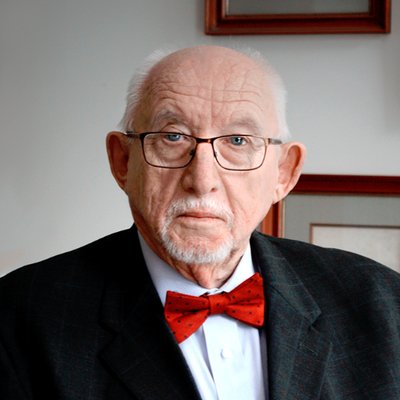I admire Ben Mankiewicz, the host of Turner Classic Movies. He is the man we all think we are in our dreams: handsome, urbane, authoritative, and oh-so-charming — a member of one of the great families of film, an aristocrat of that realm.
I would like to look like Ben; his job is appealing, too.
But wait, Ben has suffered a savage downfall. He isn’t the man he used to be to me. I nearly fell off the couch when I saw Ben, an inspiration to men, introducing a movie without his necktie.
Yes, Ben was open-collared in a suit, looking a little like an unmade bed, which is what most men look like when pursuing the current fashion of no necktie.
Shock Horror! Another bastion of masculinity has fallen.
The problem — and I aver this to be an unassailable truth — is men wearing dress shirts without ties look less than their best. If they have a bit of age on them, a lot less than their best.
The dress shirt, which hasn’t been replaced, is designed for a necktie, long or in a bow. Without the tie, men look diminished, incomplete, as though they had to leave the house without time to finish dressing.
Let me state that the necktie is indeed a useless piece of clothing, like other dress items of the past: spats, watch chains and detached collars. The passing of none of these do I regret — but ties? Cry, the lost masculine adornment of yesteryear.
The necktie was something a man could glory in. Tying a long tie and throwing the long end over the short end always gave me the same feeling as mounting my horse; when my right leg cleared the saddle, I knew something good was going to happen. A great day in the Virginia countryside, usually.
Ties were something to treasure; fine silk, splendid patterns, elegance written with restraint. Just long enough, just obvious enough, conveying refinement and masculine savoir-faire. Now, men are running around open-necked in shirts that weren’t designed to be worn that way.
Have a care for the great names in ties. Those who saved us on Father’s Day, Christmas and birthdays are losing money or gone to other pursuits.
Have a care for Hermes, Liberty, Tyrwhitt, Brioni, Fumagalli, Brooks Brothers and all those who created lovely things for the neck out of silk, finely woven wool or linen.
Just the sight of the box lit up the male face, ensuring the giver some future preferment or an extra helping at the table. The power of the tie was formidable — as Omar Khayyam, the Persian poet, might have said, it could transmute life’s leaden metal into gold.
At least it kept Dad smiling through some de rigueur family events. Ever noticed how he slipped off to the bathroom not to engage the porcelain but to admire himself in the mirror with the new gift around his neck?
Not so long ago, great restaurants had spare ties for guests who showed up without them. Now that is over.
The last holdout I know of is the Metropolitan Club in Washington. I have been to two events there recently, and the hosts thought it wise to advise their guests on dress etiquette: ties and no white-soled shoes. But no cravats or ascots as well. Strange.
I hope the cravat or its cousin, the ascot, will come back vigorously. It will save those master craftspeople who dyed silk, wove wool and shaped their handiwork over canvas to adorn men’s necks of no practical value but so dressy, so uplifting, so defining.
Give a cravat, and tell the man in your life or your father, “You look like David Niven.”
Come to think of it, I bet Ben Mankiewicz looks stupendous wearing a cravat.


